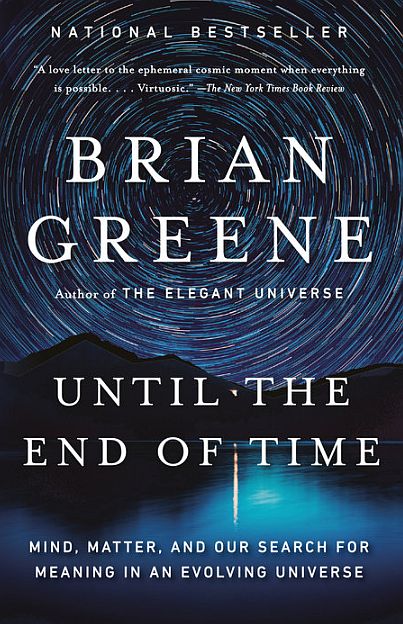
This is one of the best books on Existentialism. Brian Greene, a professor of physics and mathematics at Columbia University, postulates a reductionist view that after all, we beings of planet Earth are nothing more than a “bag of particles”.
Also, he adds that it’s a requirement to know the ingredients of what the world is made up of because:
- we are after all the by-product of universe, also
- it might help us to understand why we are here,
- why do we do what we do and
- it’ll aid us to search for meaning
Idea that we are the product of purposeless, mindless laws of physics re-focuses our attention to find answers from out there in cosmos to within. And meditation “on all of eternity” starts from this point.
Life and intelligent life are ephemeral
One of the major motifs that is running throughout the book is that we as humans recognise our immortality. Similar thought process was seen in the famous book The Denial of Death by Ernest Becker.
We believe that there is a form of continuity even after death.
If we look up our beliefs and history, we see that this thought of immortality is the driver of why we do what we do.
All the structure in the universe, right from atoms till gigantic stars, this theme of impermanence dominant all. There is an expiry date to everything that has or will exist.
We try to make sense of relative existence in this impermanent reality. And the interplay of existence between an individual life with reality at large.
Greene finds this idea remarkable that we are finite beings, and in this finitude, we experience the beauty and wonder of cosmos. All this adds a degree of urgency to that experience.
There is a sense of urgency to it because everything around us will not stay on till ‘eternity’. In fact, it might vanish or crumble back to its original form, if I may say that, and therefore, we all have just limited time span to experience and feel awe about it.
Time
We have objects to measure time but still we cannot define “what time is” as in what it is that we are “measuring”.
Time is change. It is continuously moving. Something in the environment is different than what it was at the beginning of its being. For instance, position of Sun, Earth, position of second’s hand in watch etc.
It is a timeline that has a liner path that of course moves forward and also, we can never access it backwards. Built in the notion of time is the notion of change.
Temperature could be the fundamental ingredient
Cutting edge technology today has postulated that Time and Space may not be fundamental to the universe. Rather they may have sprouted from something beneath them.
They could be an offshoot of temperature. So, what do we mean by this?
Temperature is an average speed of particles that is making up of the system. When molecules are moving rapidly, the temperature will be high. Accordingly, when particles are at rest, temperature will be low.
Therefore, temperature is average notion of something more fundamental, and that is the motion ingredient.
Coming back to the question of time, Greene says that Space and Time are not fundamental qualities of the universe but rather live upon fundamental ingredient of temperature.
Big Bang
Greene defines big bang as certain configuration of energy, space and time.
Assuming that these three were there “already” and then followed the rapid swelling of space through time. A phenomenon we thought helped us to make prediction on the basis of universe.
Big bang is a theoretical concept which talks about the inflation of space. It does not mean the beginning of universe but an ‘evolution’ of the universe.
This also means that universe was already in existence, before the big bang – a thought that gives Greene, an awe.
Therefore, the next obvious question that comes to our mind is, what lead to this inflation or the outward force.
Newton’s theory of gravity to Einstein’s theory of general relativity
Here, Einstein’s theory of relativity perfectly fits in.
Newton, in 17th century, postulated gravity as a force that pulls every objects or particles towards itself. And this force “is directly proportional to the product of their masses and inversely proportional to the square of the distance between their centers”.
However, in the early 20th century, Einstein stated a force that is anti-gravity.
So, the proposition is in the early universe there’s a little region of space that was uniformly filled with energy that gave rise to outward repulsive push, that we call the inflation or the outward force, the energy that drove the big bang. And we are the product of inflation that occurred some 14 billion years ago.
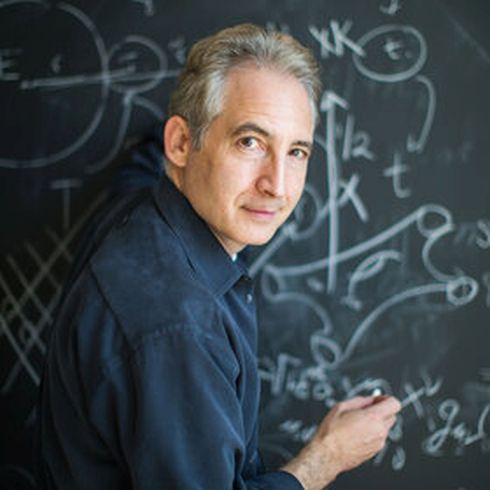
Entropic – two step
We the beings of planet Earth is one such product of the physical processes that took place some 14 billion years ago.
Greene postulates the outward rushing of energy/particles/space could be the result of 2 things.
1) Entropy: idea of disintegration, degradation moves along as particles fuse together to give rise to more complex structure.
2) Second law of thermodynamics: refers to relentless increase in entropy across universe in time.
He coined a new term, “Entropic – two step” to club the above ideas together.
Things tend to evolve from order to disorder, from structure to degradation, thus completing full circle and coming back to a point from where everything started.
If we look at the over all picture, we find that universe largely is chaotic. And this allows it to build pockets of ordered structures as long as it yields to chaos outside, as it happens in case of stars.
Entropy with ordered structures
Evolution in the universe is not just limited to species, but right from molecules and atoms. There is a competition between different specie of molecules that have learnt how to replicate themselves fast and efficiently. Here, Greene is supporting the Darwinism theory of natural selection.
With every new step the subsequent complex molecules are becoming better versions of themselves. And while they are moving forward/evolving, they are accompanied with entropy, the ultimate force that will cause these complex structures to disintegrate.
Does that mean evolution is the opposite of entropy?
Not really. Had this been the case, there wouldn’t have been the most complex structures resting (for the time being) in the universe.
In fact, after the big bang, the particles would have blasted off in different directions only. However, the actual case is slightly different. After the big bang, some particles do clump together like stars.
If we look at the formation of stars, we see that stars are formed by fusing similar particles. They are ordered entities, coming together by releasing huge amount of energy. Thus, creating disorder at the outside, so that the ordered entities can fuse together.
Complex structures store information and instructions
Particles come together, fuse and mutate to form more complex structures.
As they are moving forward, molecules tend to learn and store level-wise information within their physical make-up, which obviously becomes cumulative information over the time.
The information could also include instructions for future particles as to how to fuse together and form the next level complex molecular structure.
The end product is the molecular structure that is super important for life various life forms let’s say on planet earth.
In the entire timeline of sub-atomic particles till the complex structures, everything is governed by physical laws.
Reductionism underlines everything
Deepest explanation of reality is nested in collection of stories that
- one acquires with passing of each level
- the angle from which one is viewing the subjective reality
Explanation of complex life can be studied at the reductionist level. Physics deals with trajectory of a particle under external forces. Chemistry tells us how these particles come together. And molecular biology shows us how particles built up molecules and further to cells and to complex structures important to life forms.
Psychologist and neuroscientist shed light on the consciousness aspect emerging within the arrangement of complex structures of matter.
Is there an end to each reductionistic approach?
Greene is of the view that surely, we can reach to the end of each reductionistic approach provided we keep an open mind.
He does not mean that the result will vary, rather there will be different angle to view the same result.
Hard problem of Consciousness
Consciousness is the hard problem till today because it is still not resolved.
Quarks, particles, atoms, that is devoid of any consciousness, suddenly comes to a conscious state when they somehow get fuse together and morph to a complex structure. This question has been the most rattling one till date.
David Chalmers at NYU postulates that atoms, even at their tiniest level, do have consciousness. However, Greene do not agree to Chalmers’ presumption.
He says in the future, when we would look at consciousness, we will reach at the same conclusion that it is nothing more than particles and forces. And the arrangement of particles in certain order will definitely lead to consciousness.
Science v/s religion
Religion is a made-up thought process which is very much contradictory to the physical laws of the world.
He added that religion wasn’t developed to understand the external world. It can never calculate the speed of light per say.
Religion is spirituality for Greene. He says, that at least for some, religion is about the internal world, the conscious experience which is very much a subjective experience. And this can offer a powerful guide.
Inner capacity to feel the world is the vital role of spirituality that is invoked by religion.
Brain Greene, beautifully sums up that religion too is a story that falls under the reductionist theory of everything, since religion also holds a key to understand human experience.
Free will / choice
Free will is not real, says Greene. We are a big collection of particles. And particles are governed by the rules of physics. Quantum mechanics is backing up all the trajectories. As per this hypothesis, there is ‘no place’ for any ‘being’ to unfold the motion of particles.
There is absolutely no place for anyone to get into action.
Theory of everything
It is very difficult to reach a theory of everything.
A common packet to encapsulate all
- matter
- forces
- physics
- stories
into a unified theory is a far-fetched dream. However, Greene is excited to be a part of this movement.
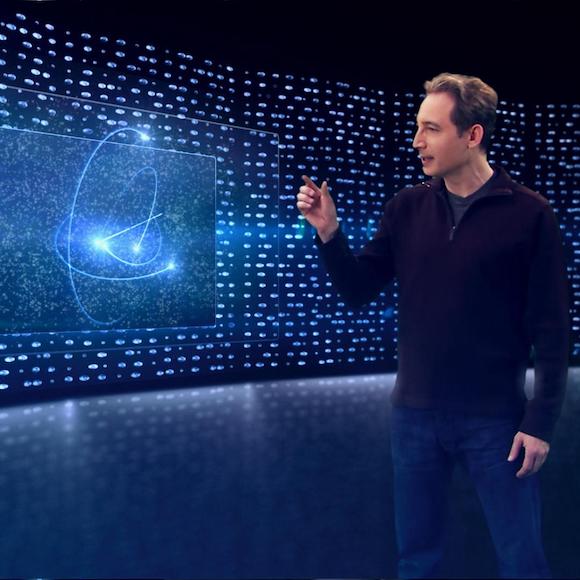
Takeaway: We are the product of purposeless laws of physics
There is no right or wrong in life. More or less all these are personal experiences imposed on the external world. The meaning or the value of all this completely manufactured, just like an acquired skill set.
There is no universal answer waiting for us to find it, rather we are the product of mindless, purposeless laws of physics.
From Greene’s point of view, this is deeply inspiring when you recognise that we are the product of nearly infinite collection of quantum processes. We are the ordered collection of particles that can do amazing thing. For instance, we can build the Hadron Collider, we have drifted in space with zero gravity, can experience beauty, we can feel adrenalin rush, varieties of emotions, all these bring in a sense of gratitude for being here. Gratitude that borders on reverence for our existence.
Until the End of Time: Mind, Matter, and Our Search for Meaning in an Evolving Universe is full of profundity. A book that beautifully binds the threads of science, cosmology, philosophy, religion, creative expression, humanity/ consciousness until the end of time.

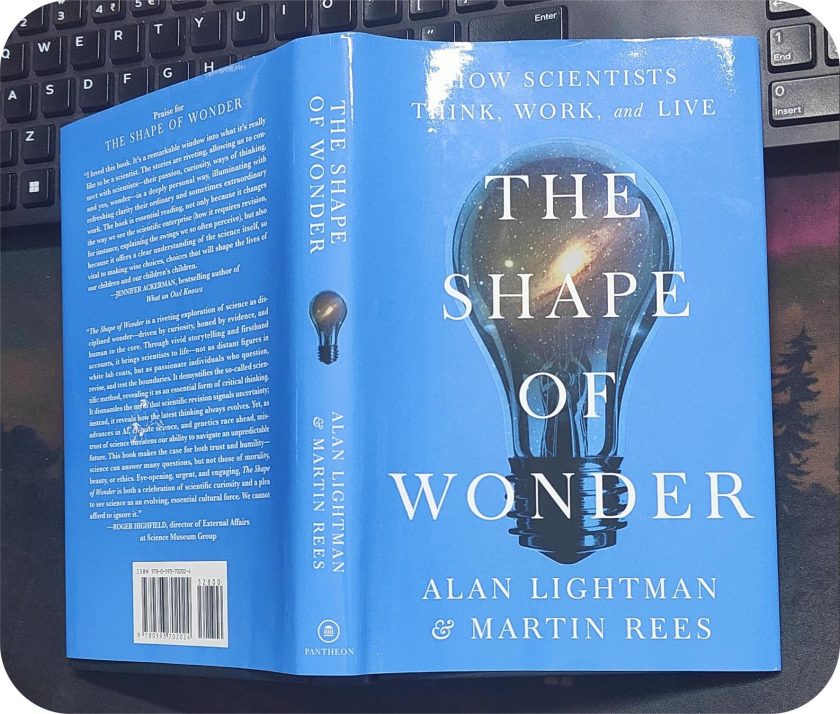

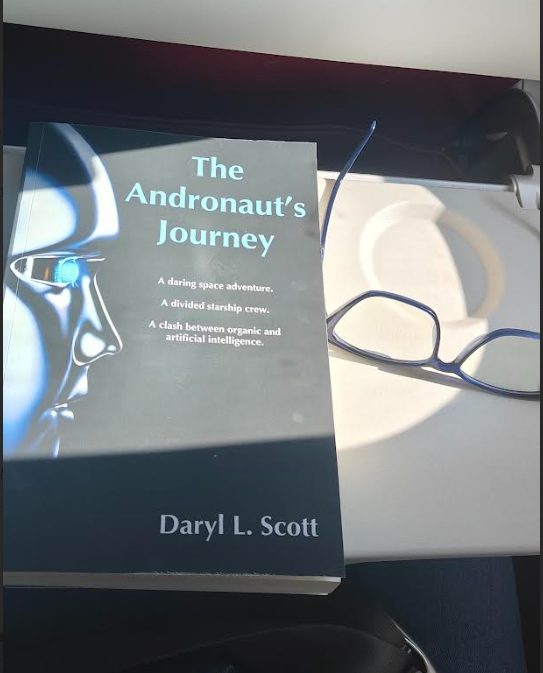
[…] professor Brian Greene. However, this happens to be my third read from the author, first two were Until the End of Time and The Hidden […]